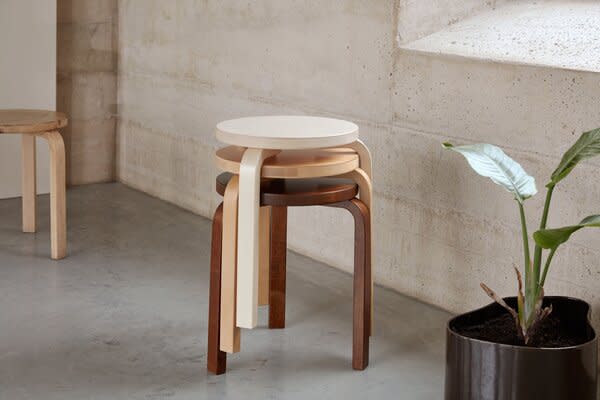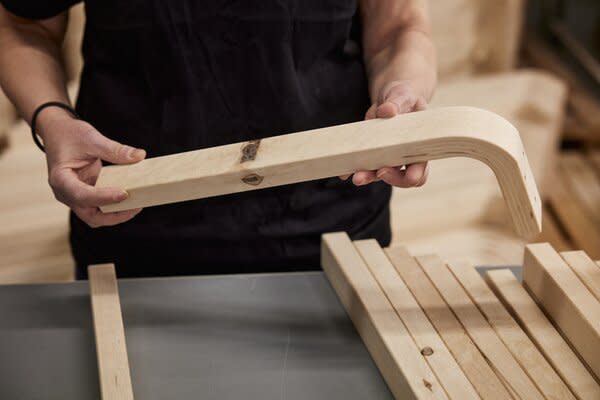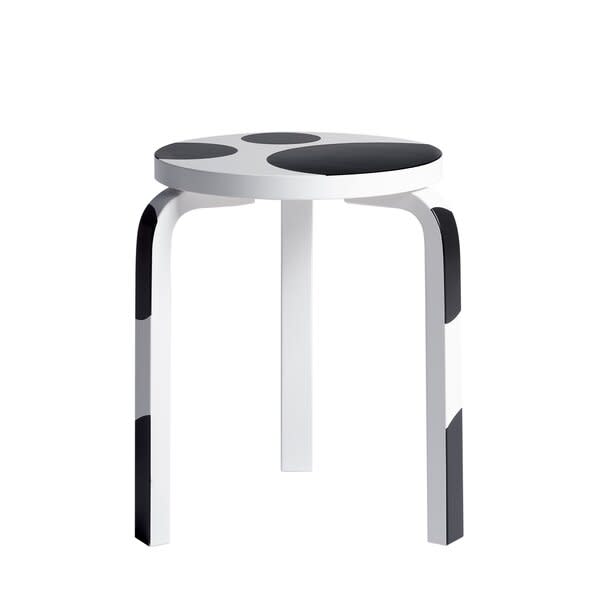Alvar Aalto’s Stool 60 Is Everywhere—But It Has Always Stood on Its Own
- Oops!Something went wrong.Please try again later.
It's the 90th anniversary of an object that proved natural forms can still be rational and modern.

Welcome to Field Guide, a column by Sami Reiss of Snake covering all-time design and where you can find it.
Ed Be and Jared Blake remember when they started selling Alvar Aalto’s work in their New York furniture store, Lichen, in 2020. Soon after, as they began manufacturing their own pieces—among them a sharp pivot cabinet and a great minimal dining table—the famous Finnish architect’s oeuvre loomed larger.
"If you try to do anything furniture-related with simplicity and grace, you’re going to run into Aalto and [Donald] Judd," says Blake. "It’s like trying to make a new kind of water. How much can you really do?"
Regarding Aalto’s Stool 60, currently celebrating 90 years in continuous production under Artek, the company Aalto founded, the answer is not a lot.
Today, as when Artek started producing them in the 1930s, 60 stools are essential decor. They’re infinitely stackable and sturdy, and have multiple uses, whether as a chair or a side table. Vintage pieces develop nice, yellowed patina if exposed to the sun; the new models can, too, over time. Old 60s generally auction for less than $1,000, while new productions ask upwards of $400. When they were first produced, they were modestly priced, which made them a fixture across Finland.
Sean Sullivan, a 35-year-old creative consultant who moved from the U.S. to Helsinki in 2020, sees Artek at every turn. "Jean Sibelius, Aalto and a couple of dudes from their wars," he says, "are on their national Rushmore." (Helsinki’s airport is known to have held flights for the architect when he ran late, and his face appeared on the country’s 50-mark bill from around 1986 through 2002.) In Finland, Artek is almost a birthright: a daycare on Sullivan’s route has "tables and the mini 66 chairs everywhere," he says. "You’re literally born into sitting on Artek furniture."
If Artek is Finland’s national brand par excellence, abroad it’s a standard bearer of restrained, functional design. Made from curved, minimal birchwood, its products—like the 153 bench, a minimal masterpiece, and the 42 and 401 armchairs with their familiar, pared-down silhouettes—form the grammar for a thick thread of midcentury-modern style.
One of the best things about decades-old objects like these are the enduring philosophical statements that come with the work. Through his designed items and buildings—and through books and speeches (and love letters to his wife, Aino, it turns out)—Aalto advanced the idea that natural forms and shapes could nonetheless be rational and modern. The 60 is the most visible example of this theory in practice. It’s simple, functional, and made out of affordable, abundant materials. It’s a technological and ideological achievement… and, what’s more, it’s beautiful.
See the full story on Dwell.com: Alvar Aalto’s Stool 60 Is Everywhere—But It Has Always Stood on Its Own
Related stories:




